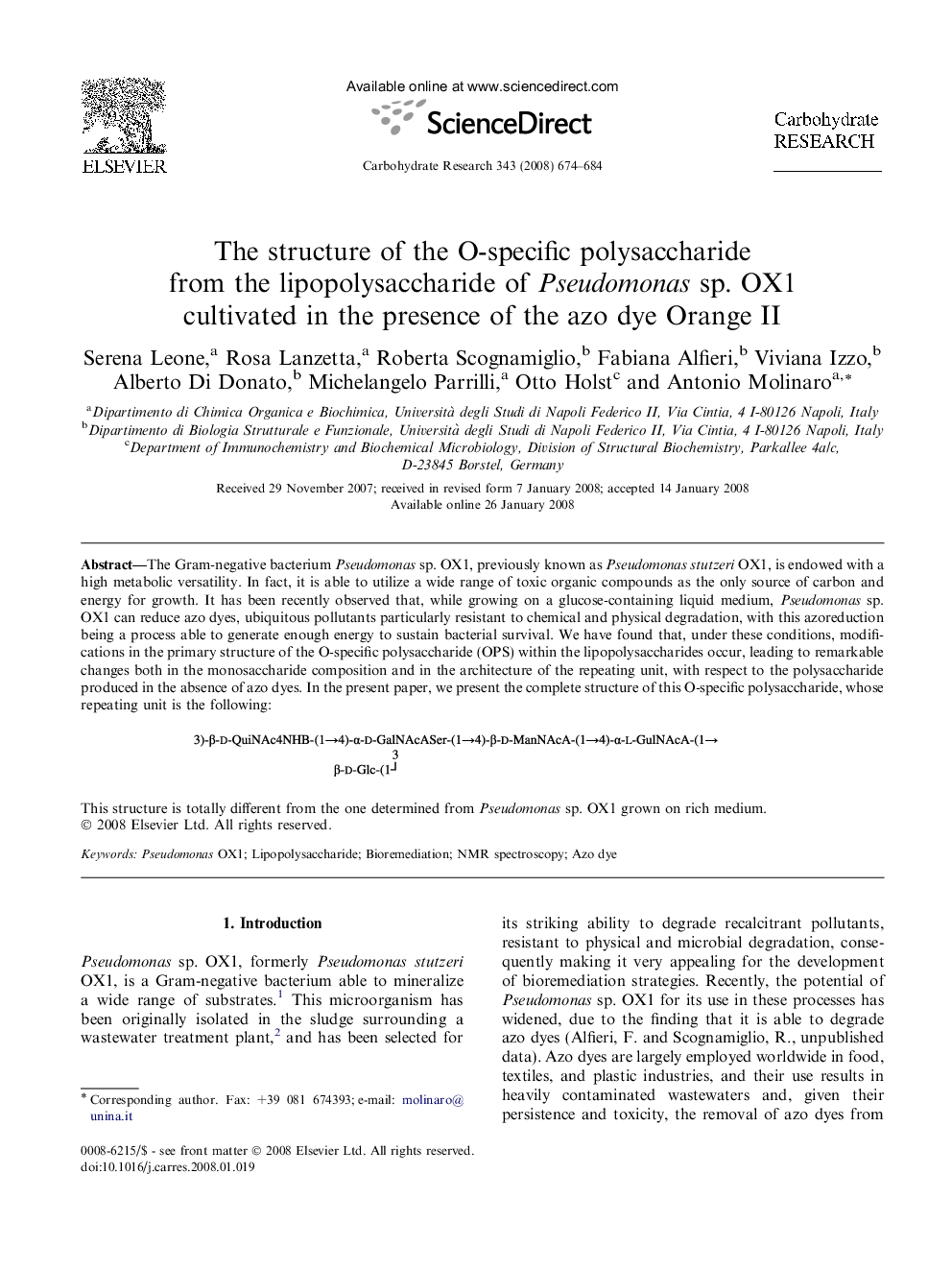| Article ID | Journal | Published Year | Pages | File Type |
|---|---|---|---|---|
| 1390747 | Carbohydrate Research | 2008 | 11 Pages |
Abstract
The Gram-negative bacterium Pseudomonas sp. OX1, previously known as Pseudomonas stutzeri OX1, is endowed with a high metabolic versatility. In fact, it is able to utilize a wide range of toxic organic compounds as the only source of carbon and energy for growth. It has been recently observed that, while growing on a glucose-containing liquid medium, Pseudomonas sp. OX1 can reduce azo dyes, ubiquitous pollutants particularly resistant to chemical and physical degradation, with this azoreduction being a process able to generate enough energy to sustain bacterial survival. We have found that, under these conditions, modifications in the primary structure of the O-specific polysaccharide (OPS) within the lipopolysaccharides occur, leading to remarkable changes both in the monosaccharide composition and in the architecture of the repeating unit, with respect to the polysaccharide produced in the absence of azo dyes. In the present paper, we present the complete structure of this O-specific polysaccharide, whose repeating unit is the following: This structure is totally different from the one determined from Pseudomonas sp. OX1 grown on rich medium.
Related Topics
Physical Sciences and Engineering
Chemistry
Organic Chemistry
Authors
Serena Leone, Rosa Lanzetta, Roberta Scognamiglio, Fabiana Alfieri, Viviana Izzo, Alberto Di Donato, Michelangelo Parrilli, Otto Holst, Antonio Molinaro,
